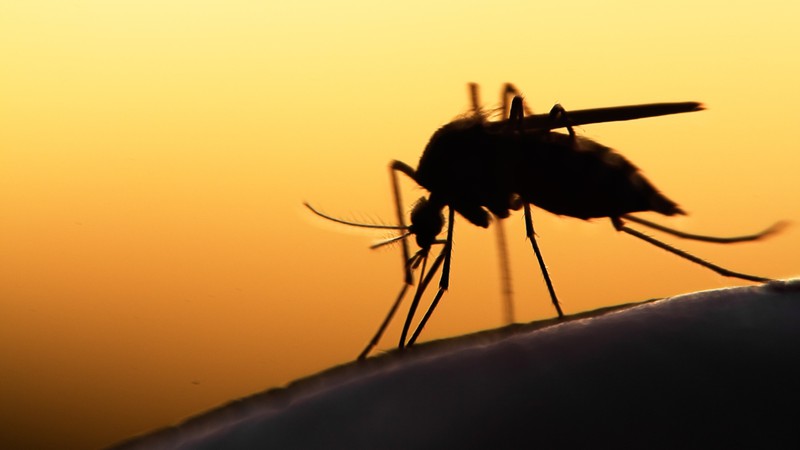Here’s why you should contact SYMVCD when you find a dead bird.

mycteria, Shutterstock
Every summer, the Sacramento-Yolo Mosquito & Vector Control District shows up in the news as more and more people test positive for West Nile virus, or when a new species of mosquito brings new health threats to the region. Some people who’ve heard of SYMVCD mainly know the organization from the very rare occasions when, to prevent a massive outbreak, the District announces that it must conduct an aerial spray operation in an urban area.
In fact, SYMVCD is a public health agency staffed by a team that includes scientists and skilled technicians who conduct a complex, year-round campaign to protect the people who live in Sacramento and Yolo counties from the deadliest animal on the planet.
Luz Maria Robles, the District’s public information officer, says the core of its mission is something vector control professionals call “surveillance”—a set of processes that keep track of three key metrics: the number of mosquitoes in the area; what species are present; and which of them are carrying some kind of virus. Out of the 27 different mosquito species in Sacramento and Yolo counties, only two transmit West Nile, the most prevalent mosquito-transmitted disease in California.
The District is able to make these determinations by collecting and analyzing real-time data during the months when mosquitoes are active in the area, typically between April and November. This is largely thanks to one of the most well-equipped vector-control laboratories in the US.
Counting and Sorting Mosquitoes by the Thousands
The basic information feeding the lab is gathered primarily through two methods. The first involves simply trapping mosquitoes, and there are a couple of ways that is accomplished. Another crucial method for gathering information is, perhaps surprisingly, the District’s public education program. And that comes largely from its “Report a Dead Bird” campaign.
Robles points out that West Nile virus is a bird disease, carried by corvids such as jays, crows, and magpies, but also songbirds like robins and house sparrows. A bird becomes infected when a WNV-carrying mosquito bites it to “take a blood meal,” says Dr. Sarah Wheeler, the District’s lab director. Wheeler explains that Culex, the species that carries West Nile virus, derives most of its nutrition from birds.
“Close to 90 percent of the time mosquitoes will feed on birds,” Wheeler reports. “If a human is out and about—or a horse, or a dog—the mosquito will bite it, and that’s how humans get West Nile. But they really prefer birds.”
The blood meal in an infected bird contains the “viral particles” of WNV. Those particles infect the mosquitoes midgut, Wheeler explains, and then work their way to the salivary glands. When the mosquito goes to take its next blood meal, it expectorates, because the saliva contains anticoagulants and vasodilators—chemicals that help the blood flow. The viral particles are then easily transmitted to the mosquito’s every host.
Once the virus has been subsequently introduced to a bird, it can spread rapidly and multiply in the animal, until it is present in high concentrations, and continue this literally sickening cycle the next time a mosquito bites it. For this reason, birds are known as “amplifying hosts” of West Nile virus.
Yard Birds as Vectors
Unfortunately, because many of our towns and cities are teeming with scrub jays, robins, etc., they can be dangerous places.
“Often these amplifying hosts live in dense urban areas,” Wheeler says, “and so you get urban transmission cycles going pretty easily, just from the birds that are living around your house. And that can be dangerous for somebody who might be barbecuing in their backyard.”
Robles says the situation would be much worse if not for the help that the District receives from people throughout Yolo and Sacramento counties. However, SYMVCD continues to focus on its education campaign in order to further its mission of protection.
“We encourage people to report it when they find a dead bird, and a lot of people do,“ Robles says. “This is especially important early in the spring.”
Help Fight the Bite
There are a number of other ways that residents of the area can assist the Mosquito and Vector Control District in its efforts to prevent the uncontrolled proliferation of mosquitoes and the spread of disease.
Visit FIGHTtheBITE.net, SYMVCD’s website, to schedule a home inspection. For free, a technician will come and help you mosquito-proof your property.
Report any neglected pools you find in your neighborhood. Each untreated swimming pool can breed literally millions of mosquitoes over the course of a summer.
If you have a backyard, pond, fountain, or rain barrel, you can stock them with mosquitofish that you can get for free from the District.
The District also offers free mosquito repellent wipes for large, outdoor evening events or for organizations that provide services to the homeless.
Lastly, the District can also come out to your Rotary, Kiwanis, neighborhood association, service club or school to provide a presentation. Email info@fightthebite.net to schedule one.
District D’s of Mosquito Prevention:
DRAIN standing water that may produce mosquitoes.
DAWN and DUSK are times to avoid being outdoors.
DRESS appropriately, wearing long sleeves and pants when outside.
DEFEND yourself by using an effective insect repellent. Make sure to follow label directions!
DOOR and window screens should be in good working condition.
DISTRICT personnel are also available to address any mosquito problems. Call (800) 429-1022 or visit FIGHTtheBITE.net.
Long form articles which explain how something works, or provide context or background information about a current issue or topic.